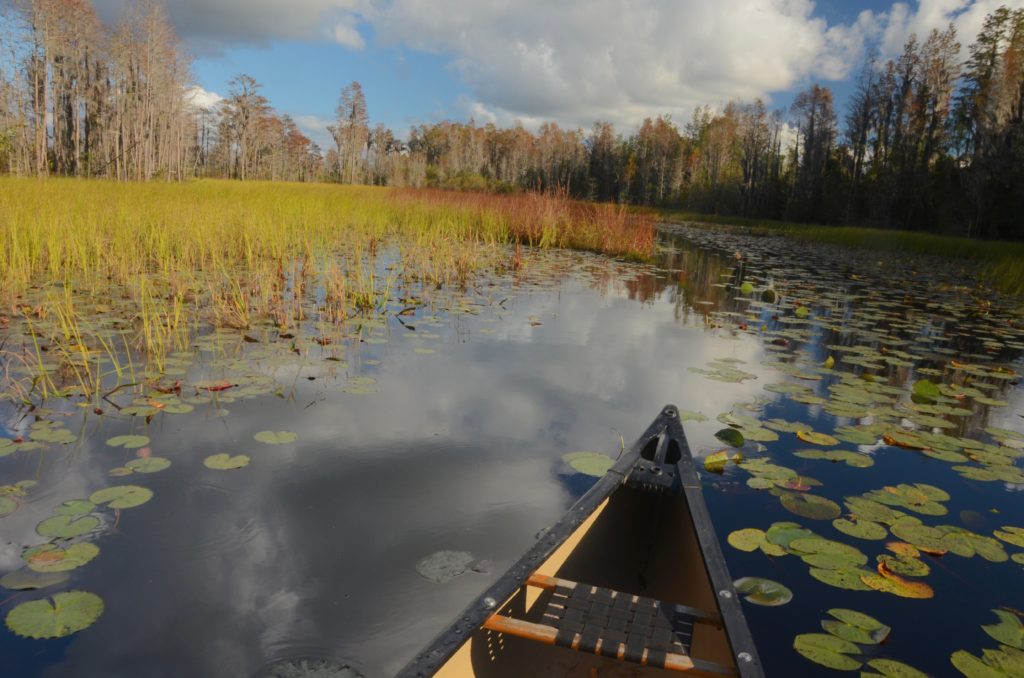A broad coalition of groups commended the administration’s action to ensure long-term protections for this bucket-list paddling, fishing, and hunting destination
Hunters and anglers are applauding the Department of the Interior’s decision to cancel two federal hardrock mineral leases located in the Superior National Forest within the Boundary Waters Canoe Area Wilderness watershed, citing the importance of sustaining the Boundary Waters’ recreational, economic, and fish and wildlife values.
Sportsmen and sportswomen also commended federal agencies’ reinterpretation of the legal “m-opinion” that underpinned several previous agency decisions to allow for sulfide-ore copper mining permits and leases to be granted within the watershed. Thousands of members of organized hunting, fishing, and conservation groups support this decision, which is an important step in the effort to permanently protect the Boundary Waters watershed from the negative impacts of hardrock mining.
Over 250,000 people recently commented in a federally led process to set aside the over 225,000 acres in the Superior National Forest from destructive hardrock mining, with the public input overwhelmingly in favor of the area’s long-term conservation. The Boundary Waters Canoe Area Wilderness is America’s most-visited wilderness area, which supports a regional economy highly dependent on access to public lands.
“Today’s announcement by the Biden administration is the right decision for the Boundary Waters and for the outdoor community that has worked so hard to protect it for future generations,” says Lukas Leaf, executive director of Sportsmen for the Boundary Waters. “Spending time outdoors is what rejuvenates and energizes us. The importance of preserving places like the Boundary Waters that provide that experience is immeasurable. We appreciate these steps taken by federal land management agencies that lay out the correct process by which we can protect our priceless public lands and waters. Now we must build on this momentum and achieve permanent protection for the BWCA.”
“We applaud the administration’s decision to cancel the hardrock mineral leases upstream of the Boundary Waters Canoe Area,” says Whit Fosburgh, president and CEO of the Theodore Roosevelt Conservation Partnership. “The Superior National Forest was originally set aside by President Theodore Roosevelt to conserve this remarkable landscape, and today’s announcement renews the opportunity to permanently safeguard the Boundary Waters as a renowned canoeing, fishing, and hunting destination.”
Downstream of the mining leases are sensitive populations of native lake trout that are significant not only to anglers, but also as part of Minnesota’s natural heritage, says John Lenczewski, executive director of Minnesota Trout Unlimited. “Today’s decision is an important step to help ensure that populations of these unique fish remain healthy long into the future,” he says.
Local hunters and anglers have been vocal in their opposition to the leases for years. “We have worked hard to press decision-makers to ensure we keep these waters clean and safe,” says Matt Lee, chair of Minnesota Backcountry Hunters and Anglers. “I would like to thank all of our members—who have reached out to the last three administrations—with the goal of ensuring that these lands and waters are protected for future generations. We look forward to our continued work with the administration and congressional leaders to implement permanent conservation measures for the Boundary Waters.”
Other leaders in the hunting and angling community also reacted positively to the announcement:
“With memories of my family’s trip to the Boundary Waters this summer still fresh in my mind, I had the great pleasure of telling my kids today that an imminent threat no longer exists,” says BHA President and CEO Land Tawney. “We join a thunderous applause in thanking the administration for rescinding the leases that never should have been issued in the first place – and we look forward to continuing to work with Congress to assure the long-term protection of the Boundary Waters watershed.”
“The reasons to safeguard the magnificent Boundary Waters, America’s most popular wilderness area, are as crystal clear as the pristine waters of the Rainy River Watershed,” says Collin O’Mara, president and CEO of the National Wildlife Federation. “The Boundary Waters are a natural treasure that is simply too important to risk – and the costs for people and wildlife too steep. The Biden administration’s decision will safeguard essential habitat for hundreds of wildlife species and protect thousands of jobs and hundreds of millions of dollars of economic benefits that depend upon the Boundary Waters’ world-class camping, hiking, paddling, fishing, and hunting.”
Securing permanent protections for the Boundary Waters was on TRCP’s list of top priorities for the Biden Administration. Learn more about this issue on our blog.
Top photo courtesy of Sportsmen for the Boundary Waters
















So happy these leases have been cancelled.
Great to hear that the mining leases have been cancelled.
The Boundary Waters and adjacent region is so beautiful! It one of the few areas with its unique biodiversity left in the U.S. It brings in people from all over creating an economic boom relative to tourism. At least FOR NOW, its good to know we will keep this amazing place as is.
This is the first indication that Secretary Haaland deserved the appointment. She needs to do much more to protect our wildlife and public lands.